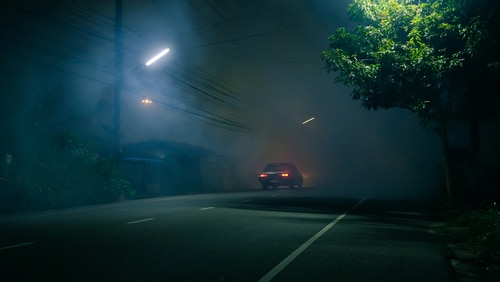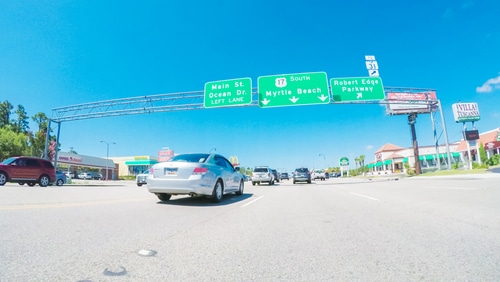Driving at night is something that many drivers find nerve-racking, no matter how long they have been driving. The majority of decisions drivers make are based on what they see. Drivers must use extra caution when driving at night because the darkness significantly reduces visibility. This makes it difficult to read signs, anticipate changes in the road and spot hazards in the road. Additionally, poor visibility reduces the amount of time drivers have to react to obstacles in the road. This often results in sudden swerving or braking.
According to the National Safety Council (NSC), you’re about three times more likely to be involved in a crash at night than you are during the daytime. The days are the shortest between November and March, which means more drivers find themselves in the dark during their daily commutes. If you were hurt in a crash while driving at night, Lowcountry Law can help you recover damages.
How far can drivers see at night?
 Drivers can typically only see about 250 feet ahead of them at night with the normal use of their headlights. With the high beams turned on, the range of visibility doubles to 500 feet. This is significantly less than the range of visibility drivers have during the daytime. The following factors also affect visibility:
Drivers can typically only see about 250 feet ahead of them at night with the normal use of their headlights. With the high beams turned on, the range of visibility doubles to 500 feet. This is significantly less than the range of visibility drivers have during the daytime. The following factors also affect visibility:
- Dirty or poorly maintained headlights – Dirty headlights can reduce light output by as much as 95 percent, which significantly reduces the range of visibility. It’s important that drivers regularly clean their headlights and replace defective headlights.
- Declining visibility – Older drivers (50 and older) generally need twice as much light to see adequately at night as younger drivers (30 and younger) do. Many older drivers also suffer from cataracts and other degenerative eye disorders. It’s important that older drivers get an eye exam and consider investing in nighttime driving glasses.
- Glare from other driver’s headlights – The glare that comes from other drivers’ headlights can be nearly blinding, especially when other drivers have their high beams on.
- Weather conditions – Weather conditions, such as rain and fog, can make it very difficult to see at night. According to the U.S. Department of Transportation, an average of 556,151 crashes occurred during rainy conditions and 25,451 occurred during foggy conditions each year from 2007 to 2016. An average of 221,549 injuries and 2,937 deaths occurred each year during both conditions combined.
- Poor lighting – It’s much easier to see at night in well-lit urban areas than it is on unlit rural roads.
How speed plays a role in nighttime car accidents
Drivers can often drive safely during unfavorable conditions when they travel at a speed that is safe and prudent. Speed often plays a significant role in nighttime car accidents. That’s because some drivers don’t allow themselves enough time to get from point A to point B, nor do they maintain a safe driving distance between them and the car in front of them. Additionally, drivers who use caution at night are often tailgated by impatient drivers. The blinding glare from the headlights of a tailgating car can easily obstruct visibility.
Not only does speeding at night increase the risk of a crash, but it also increases the likelihood of a crash being severe or fatal. In South Carolina, speed was a factor in 285 out of 1,001 traffic fatalities in 2019. That’s more than 1 out of every 4 statewide road deaths.
Contact Lowcountry Law after a nighttime crash
Lowcountry Law handles a wide range of car accident cases and we have the experience to fight for you. We’ll take a personalized approach to your case and leave no stone unturned when advocating for full and fair compensation. We know how to deal with insurance companies and negotiate settlements. If a settlement can’t be reached with the other driver’s insurance company, we’re prepared to go to trial.
If you were injured in a crash, we’d be glad to sit down with you and go over your legal options during a free case evaluation. To get started simply contact us online or call one of our offices in Mount Pleasant or Myrtle Beach.



